Reports
Looking for Evidence of the Construction of Iran’s New Centrifuge Assembly Plant: New Possible Preparations Identified
by David Albright, Sarah Burkhard, and Frank Pabian
October 7, 2020
This summer, Iran decided to construct a new underground centrifuge assembly plant, following the destruction of the above ground one at the Natanz enrichment site on July 2, 2020. So far, Iran has undertaken little visible work in the mountains adjacent to the Natanz enrichment site with the exception of possible construction preparations. A nearby gunnery range appears to have been converted to a construction support and staging area in the first half of September. Because of the added difficulties of building an underground site, the completion of a new centrifuge assembly plant able to assemble thousands of advanced centrifuges per year is unlikely in 2021.
In early September 2020, Iran announced its earlier decision to replace its Iran Centrifuge Assembly Center (ICAC), destroyed in early July of this year,1 with a new facility in a mountain near the Natanz uranium enrichment site. According to Ali Akbar Salehi, head of the Atomic Energy Organization of Iran (AEOI); “It was decided to establish a more modern, wider and more comprehensive hall in all dimensions in the heart of the mountain near Natanz. Of course, the work has begun.”2 The destroyed site was designed to assemble thousands of advanced centrifuges each year. Its destruction set back Iran’s plans to expand its centrifuge program by at least a year and perhaps longer. Exactly how long will depend on Iran’s ability to rebuild the new facility, outfit it with sensitive equipment, and bring it into operation.
It is hard to envision that Iran could quickly replace its assembly plant able to churn out thousands of centrifuges in a year. The above ground center at the Natanz enrichment site took years to finish and bring into operation, although some of that delay was caused by restrictions in the Joint Comprehensive Plan of Action (JCPOA). Nonetheless, absent the JCPOA, Iran would have needed more than a few years to build and operate a production scale plant.
Building the new plant in a mountain would further complicate its construction. The tunnel must include clean rooms necessary for assembling advanced centrifuges. Some of the replacement equipment is controlled internationally and highly sophisticated, likely requiring Iran to try to obtain it from abroad. Since Iran is banned from buying it, it will need to activate its illicit procurement networks, potentially causing further delays.
Iran could shorten the time to build the new assembly center by placing it in a pre-existing tunnel complex associated with the Natanz enrichment site. At the Institute, in 2007, we located and characterized this tunnel complex about two kilometers due south of the Natanz enrichment site, and published a study of its visible features at the time.3 Figure 1, a June 11, 2020, Google Earth image, provides a perspective overview of the mountain area southeast of the Natanz enrichment site as the area appeared prior to the ICAC’s destruction, identifying the following key areas of interest: the existing tunnel facility, a security guard forces gunnery range, and a former construction site about halfway in between the two. Figure 2 shows a commercial satellite image of the tunnel area in 2007, the year that the tunnel facility was built.
Although the existing tunnel facility is associated with the Natanz enrichment site, it is unclear what role it serves or if it was inspected by International Atomic Energy Agency (IAEA), unlike the tunnel complex associated with the Esfahan uranium conversion site, discovered in 2004 and subsequently inspected by the IAEA.4 After the Natanz tunnel’s discovery in 2007, Iran was not as forthcoming and resisted an inspection. Whether this tunnel facility was addressed in the JCPOA is unknown. As a result, less may be known about the internal structures and capabilities of this existing Natanz tunnel facility.
Iran could choose another site, and there are suitable locations to do that. However, that choice would require building an entirely new tunnel, further delaying the centrifuge assembly’s start up. Iran could also build a hybrid facility with part underground and part half-buried adjacent to a tunnel entrance, a plan considered at the former nuclear weaponization Shahid Boroujerdi site being built under the Amad Plan in the early 2000s.5
Preparations for a New Facility May Have Begun
To assess Iran’s announcement, the Institute obtained recent high-resolution commercial satellite imagery of the existing tunnel site south of the Natanz uranium enrichment site and surveyed the surrounding area looking for new construction subsequent to the destruction of the above ground Iran centrifuge assembly center. Figure 3 shows the key area of interest including the existing tunnel facility as of August 31, 2020; Figure 4 shows it on September 18, 2020. Comparing these more recent images with the ones from prior to July 2020 leads to several conclusions.
The Institute determined that the pre-existing tunnel facility has not changed significantly since 2007, and there continued to be very little visible activity through the end of September 2020. Figures 5 and 6 show the existing tunnel facility as it appeared on August 31 and September 18, 2020, respectively. There has not yet been any indication of new road construction to, or tunneling or other excavation work in, the mountains south of the Natanz enrichment site, including at the pre-existing tunnel facility.
The most notable changes in the monitored area between June and late September 2020 occurred at the gunnery range. Comparing imagery from August 31 and September 18, 2020, the Institute was able to identify new road grading from the main highway at a point where there is an abandoned anti-aircraft artillery (AAA) site over to the guard forces gunnery range (See Figures 3 and 4). Moreover, the role of the gunnery range appears to have been converted to that of a construction support and staging area (See Figures 7 and 8). The evidence of that conversion is manifest in the presence of two bulldozers parked inside the firing range, along with the erection of two sheds that are probably intended for construction support. The sheds block the former line of fire, rendering the firing range unfit for its original purpose.
Further, it is significant that additional road grading now also connects this converted gunnery range with the former construction area, which the Institute identified in 2007, located in the more mountainous terrain roughly 500 meters south of the gunnery range (See Figures 9-11). That area includes two small reveted areas containing two small buildings, suggesting that the buildings were likely originally designed to store explosives, such as that which could now be used for any future tunnel construction.
Given the conversion of the guard forces gunnery range and the presence of new road grading to the former construction area, Iran may be planning entirely new construction instead of repurposing the existing tunnel facility; if this new activity indeed represents preparations for the construction of an underground centrifuge assembly facility. Alternatively, Iran may be planning on constructing more than one assembly facility.
Conclusion
Construction of the main centrifuge assembly center could start soon. The tunnel area and its surroundings should continue to be monitored closely.
Bringing a new centrifuge assembly center into operation may take several years, if the goal is to assemble thousands of advanced centrifuges per year. The ICAC’s destruction has set back Iran’s plans to deploy thousands, even tens of thousands of advanced centrifuges per year.
Faced with expected delays, Iran may opt to build more than one or modular facilities, where each one has a smaller annual capacity but could be constructed more quickly.
Whatever Iran pursues, including the construction of more than one facility or an underground one, these sites will remain vulnerable to attack. Rendering inoperable a centrifuge assembly facility, dependent on a clean room environment, does not require the destruction of the tunnel itself.
Although it is understandable that Iran would be determined to rebuild following the destruction of the ICAC, Iran should also consider the economic, civilian pointlessness of its centrifuge program. While highly useful as part of an effort to make nuclear weapons, Iran’s advanced centrifuge will remain uneconomic, compared to buying enriched uranium overseas, and an on-going threat to the international and regional communities. If Iran’s true goal is the development of a large-scale civilian nuclear power program, it would be far more likely to succeed if it abandoned its domestic centrifuge program, starting with not building a new advanced centrifuge assembly center.
Figure 1. A June 2020 image giving an overall perspective view of the Natanz uranium enrichment site and the mountain area south of it. The mountain area includes the previously identified tunnel facility that dates to 2007.
Figure 2. An August 2007 commercial satellite image of the tunnel complex associated with the Natanz enrichment site and its surroundings.
Figure 3. The key area south of the Natanz uranium enrichment site on August 31, 2020, prior to the identification of new road grading, etc.
Figure 4. The key area south of the Natanz uranium enrichment site on September 18, 2020, showing the evidence of the new road grading, etc.
Figure 5. Closeup of the tunnel facility constructed in 2007 located two kilometers south of the Natanz Uranium Enrichment Site as of 31 August 2020.
Figure 6. Closeup of the tunnel facility as of 18 September 2020. The tunnel facility has not changed significantly since 2007, and there continued to be very little visible activity through the end of September 2020.
Figure 7. The security forces gunnery range, prior to the destruction of the ICAC, located south of the Natanz uranium enrichment site.
.jpg)
Figure 8. The security forces gunnery range, post destruction of the ICAC, showing evidence of recent road grading, construction vehicle activity, and the erection of two new probable construction support sheds which now block all possible lines of fire. It would appear therefore that the role of the range has been converted to a construction support and staging area.
Figure 9. Area of previous construction activity in 2007 that was subsequently abandoned but now appears to have new road grading to it beginning in mid-September 2020. This image is taken directly from a 2007 Institute report.
Figure 10. The previously noted former construction area as it appeared on 31 August 2020.
Figure 11. The previously noted former construction area as it appeared on 18 September 2020 showing the presence of new road grading within the area connecting with the now converted gunnery range.
1.David Albright, Sarah Burkhard, and Frank Pabian, “Update on Assessing the Detonation at the Natanz Iran Centrifuge Assembly Center: New High Resolution Satellite Imagery Refines Details on the Explosion and Fire,” Institute for Science and International Security, July 9, 2020, https://isis-online.org/isis-reports/detail/update-on-assessing-the-detonation-at-the-natanz-iran-centrifuge-assembly ↩
2. Parisa Hafezi, “Iran building new production hall for centrifuges in mountains near Natanz,” Reuters, September 8, 2020, https://www.reuters.com/article/iran-nuclear-natanz/iran-building-new-production-hall-for-centrifuges-in-mountains-near-natanz-idUKL8N2G540Z ↩
3. David Albright and Paul Brannan, “New Tunnel Construction at Mountain Adjacent to the Natanz Enrichment Complex,” Institute for Science and International Security (ISIS), July 9, 2007, https://isis-online.org/uploads/isis-reports/documents/IranNatanzTunnels.pdf. ↩
4. Institute for Science and International Security, “New Satellite Images Show Tunnel Construction at Esfahan Facility in Iran,” February 17, 2005, https://isis-online.org/isis-reports/detail/new-satellite-images-show-tunnel-construction-at-esfahan-facility-in-iran/8 ↩
5. On Shahid Boroujerdi, see https://isis-online.org/isis-reports/detail/a-key-missing-piece-of-the-amad-puzzle and https://isis-online.org/uploads/isis-reports/documents/Annex_5_Parchin_Tunnel_Overlay.pdf ↩

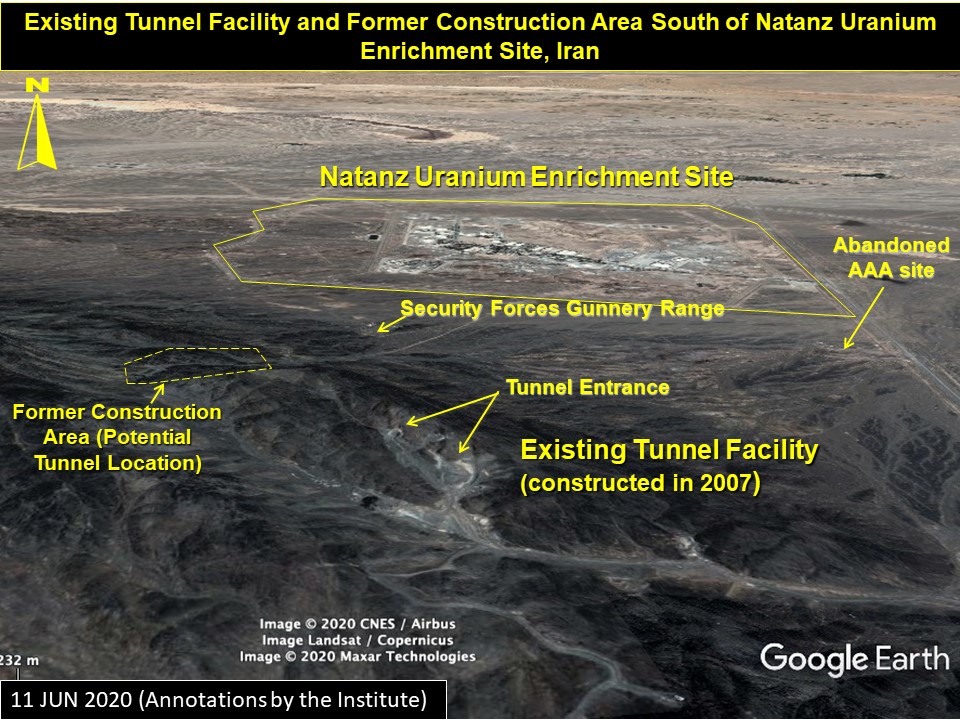

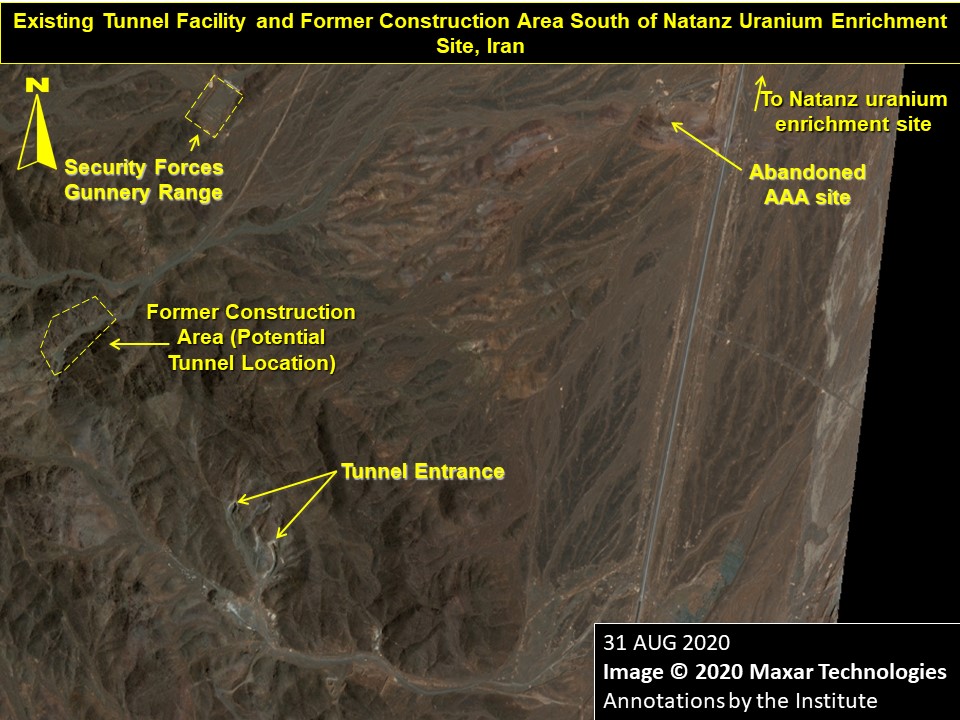

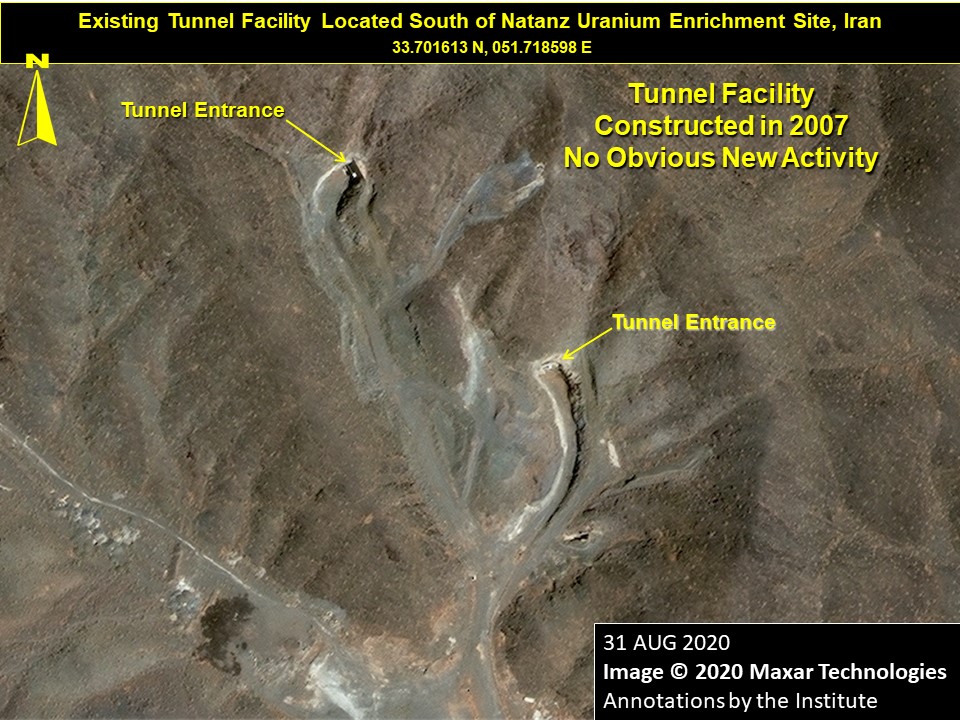
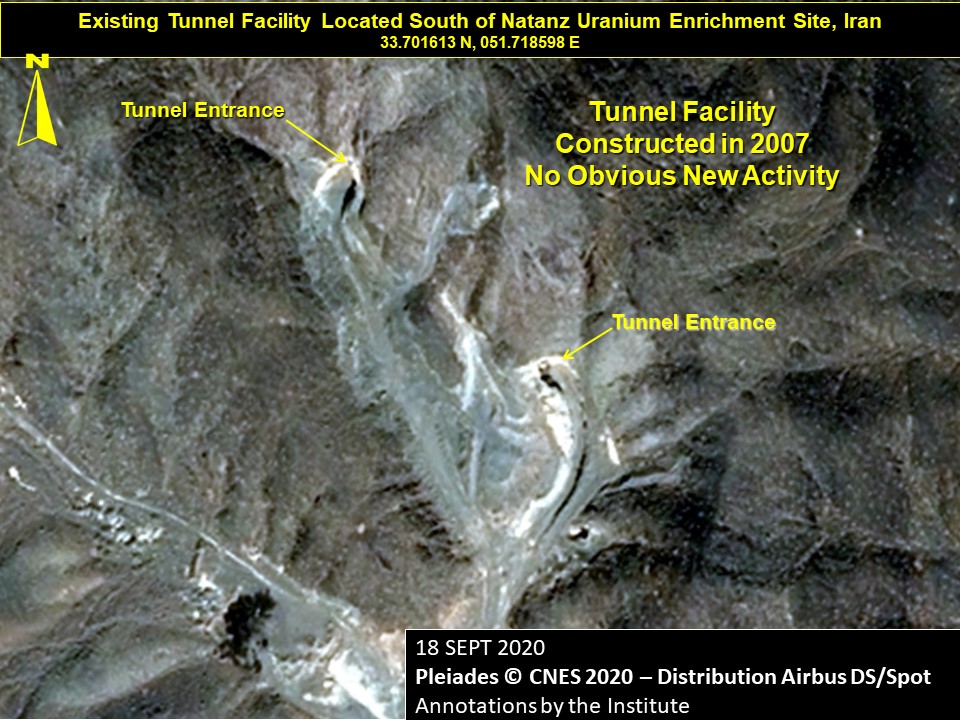
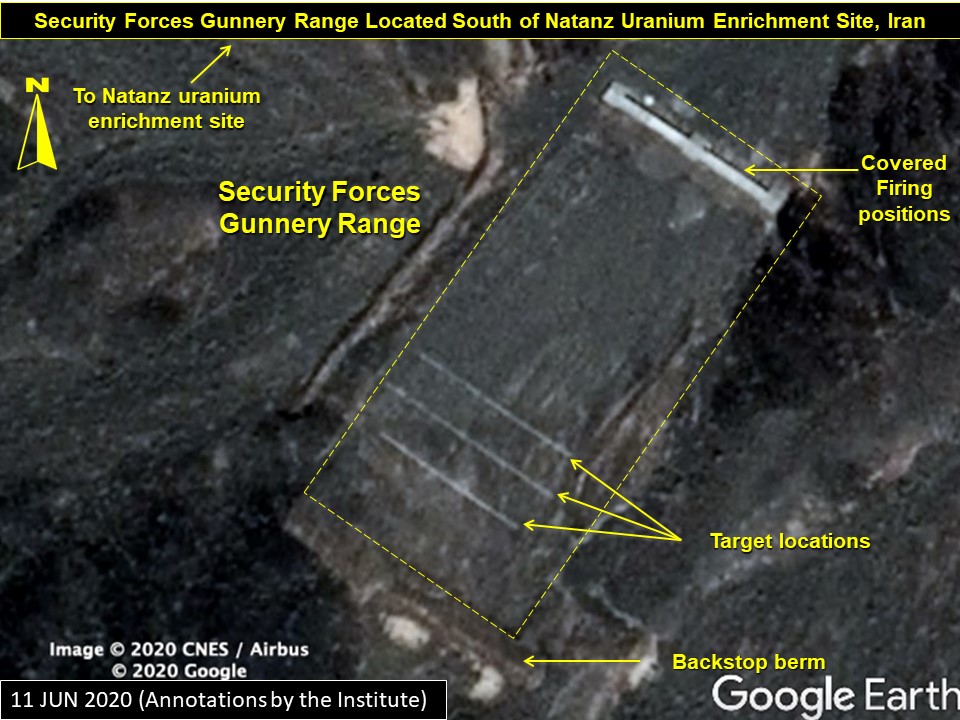
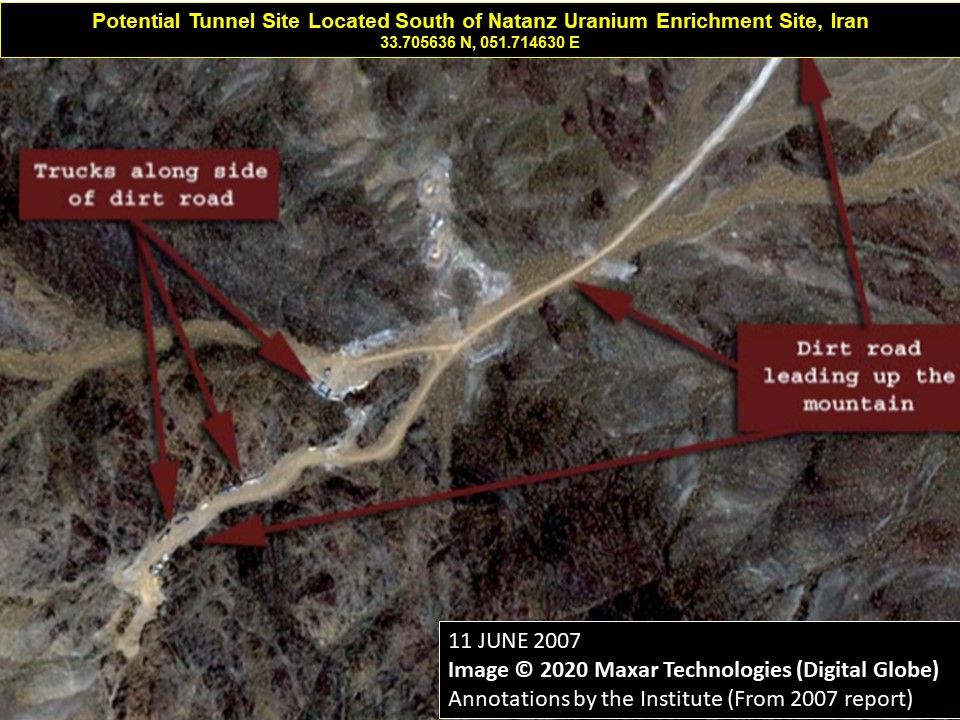
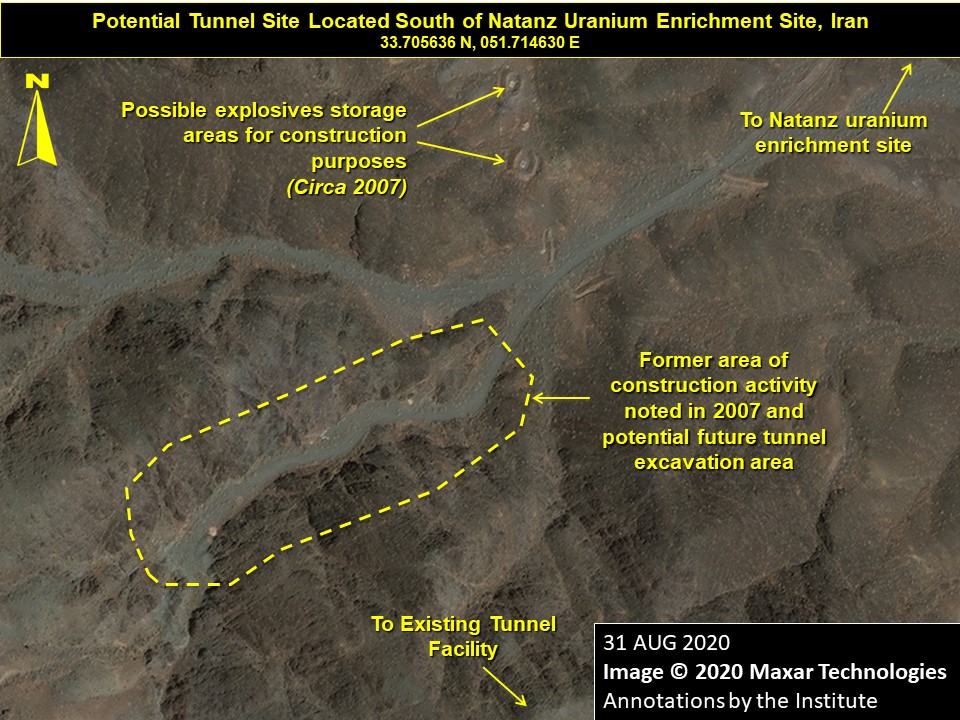
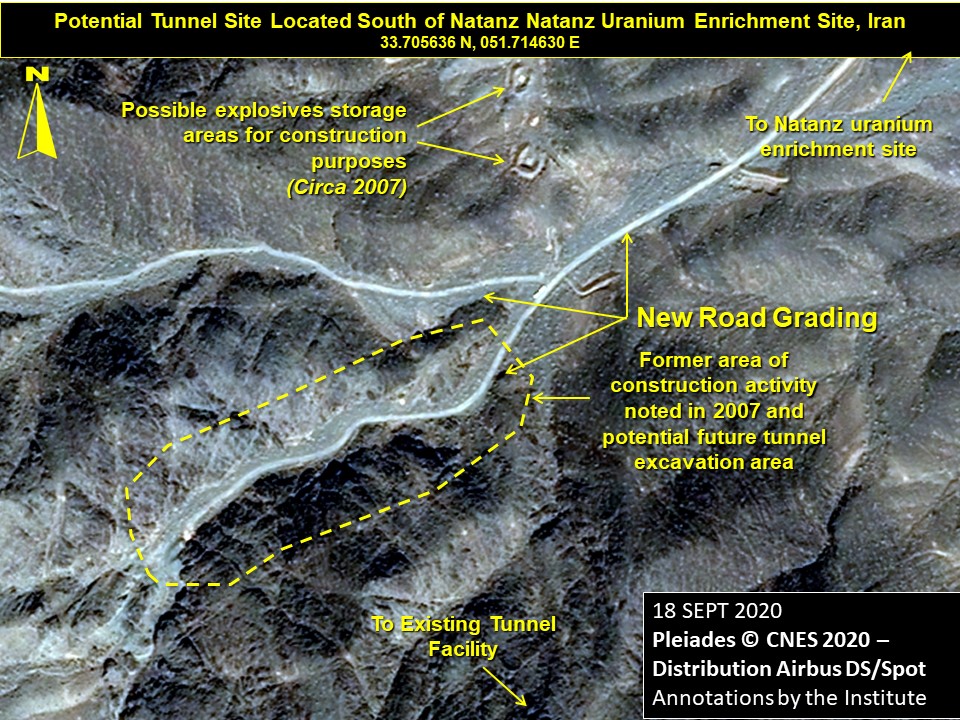
 twitter
twitter